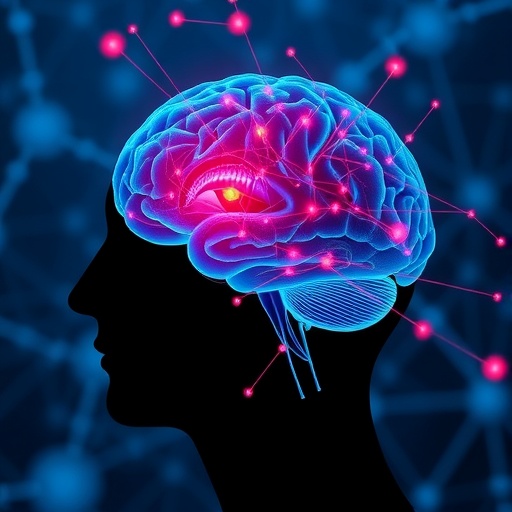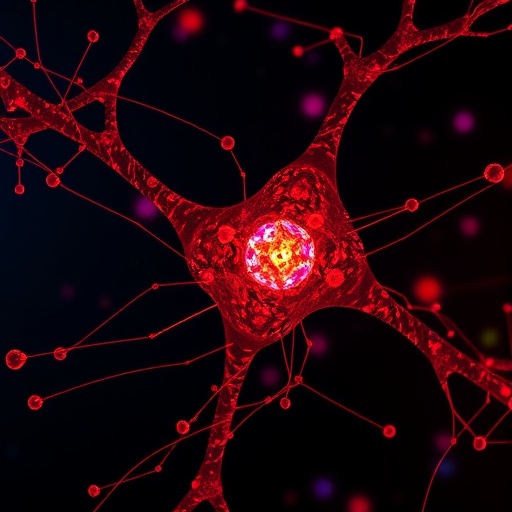In a remarkable breakthrough, neuroscientists from the Nencki Institute and the Max Planck Florida Institute for Neuroscience have unlocked a sophisticated molecular mechanism underlying the brain’s ability to learn and remember. Their groundbreaking research, recently published in Science Advances, sheds light on how specific connections between neurons—known as synapses—are selectively strengthened. This discovery illuminates a crucial piece of the synaptic plasticity puzzle, a process indispensable for cognitive function and mental health.
The human brain is a vast network, comprised of billions of neurons communicating via synapses. These points of contact are far from static; they dynamically adjust their strength in response to activity. This adaptability, termed synaptic plasticity, enables the encoding and retention of new information—forming the biological foundation for learning and memory. Yet, despite decades of research, the exact molecular choreography that allows synaptic changes to occur with pinpoint spatial and temporal precision remained elusive.
Addressing this knowledge gap, the collaborative team led by Professors Piotr Michaluk, Leszek Kaczmarek, and Ryohei Yasuda utilized cutting-edge microscopy and biochemical approaches to probe the extracellular environment where these synaptic modifications unfold. Their focus centered on the interplay between two critical proteins: Brain-Derived Neurotrophic Factor (BDNF) and Matrix Metalloproteinase-9 (MMP-9). Both have long been implicated in neuroplasticity, but how they coordinate at the level of individual synapses was previously unknown.
This study revealed that upon synaptic activation, neurons promptly release both BDNF and MMP-9 into the synaptic cleft. However, BDNF is initially secreted in an inactive, precursor form incapable of triggering synaptic strengthening. The activity of MMP-9 is pivotal here—it acts enzymatically to cleave this precursor into a mature, active BDNF molecule localized precisely at the stimulated synapse. This elegantly ensures that synaptic strengthening is confined to the appropriate connection, preventing widespread and nonspecific plasticity.
Utilizing advanced real-time imaging, the researchers could visualize this process with unprecedented resolution. They demonstrated that MMP-9’s enzymatic activity is transient and localized exclusively at the activated synapse. This tightly regulated activation prevents the spillover of BDNF signaling, thereby guaranteeing that only the synapses receiving neural input experience functional potentiation. Such exquisite molecular precision has long been hypothesized but not empirically demonstrated until now.
This discovery transforms our understanding of the extracellular molecular dynamics driving learning and memory. It highlights synaptic plasticity as a highly coordinated event requiring synchronous engagement of multiple proteins in a defined spatial-temporal framework. Rather than acting in isolation, BDNF and MMP-9 function as a tandem pair, synchronizing synaptic modulation with remarkable accuracy.
The implications extend far beyond basic neuroscience. Aberrant synaptic plasticity is increasingly recognized as a core pathological feature in a spectrum of neurological and psychiatric disorders including schizophrenia, major depression, addiction, and epilepsy. The detailed insight into the MMP-9/BDNF interaction opens new therapeutic avenues aiming to restore or correct dysfunctional synaptic remodeling selectively without impacting the entire neural network indiscriminately.
Therapeutic interventions targeting synaptic plasticity have traditionally faced the challenge of specificity. Drugs that modulate plasticity broadly risk unintended neurological side effects by affecting healthy synapses. The elucidation of how MMP-9 enzymatically activates BDNF at singular synapses offers a molecular target amenable to pharmacological precision. Modulators designed to enhance or mimic this interaction could rejuvenate impaired synaptic function in diseased brains with unprecedented specificity.
The research team plans to extend their investigation by examining whether disruptions in the timing or coordination of MMP-9 and BDNF activity contribute directly to the etiologies of plasticity-related disorders. Understanding these molecular dysfunctions could catalyze the development of diagnostic biomarkers and enable earlier interventions tailored to individual synaptic pathologies.
Furthermore, this study underscores the power of advanced microscopy techniques in neuroscience research. Observing real-time enzymatic activity at single synapses provides a robust platform to dissect complex neural processes at the molecular level. Such innovative methodologies pave the way for future discoveries in synaptic communication and other facets of brain function.
In essence, this work provides a groundbreaking framework for understanding the molecular basis of synaptic specificity in growth and adaptation. By demonstrating how extracellular enzymes control the localized activation of neurotrophic signals, the study reveals an exquisite biological system fine-tuned for precision learning.
Professor Leszek Kaczmarek reflected on the significance of the findings: “This molecular partnership between MMP-9 and BDNF is a cornerstone of how our brains adapt and learn. By comprehending this mechanism, we move closer to translating basic neuroscience insights into meaningful clinical applications.”
As the global neuroscience community continues to unravel the mysteries of the mind, discoveries such as this emphasize the intricate molecular dance orchestrating brain plasticity. The future promises novel interventions grounded in a molecular understanding that could revolutionize treatments for cognitive impairments and mental health disorders worldwide.
Subject of Research: Animal tissue samples
Article Title: BDNF-driven synaptic plasticity requires autocrine Matrix Metalloproteinase-9 activity
News Publication Date: 24-Sep-2025
Web References: DOI: 10.1126/sciadv.adx2369
Keywords: Neuroscience, Neuroplasticity, Learning, Neurons, Biosensors
Tags: brain connectivitycollaboration in neuroscience researchextracellular environment in synaptic changesimpact of proteins on mental healthlearning and memory processesMMP-9 function in synapsesmolecular basis of cognitive functionneural communication and adaptationneuroscientific breakthroughs in learningrole of BDNF in brain healthsynapse strengthening in neuronssynaptic plasticity mechanisms





